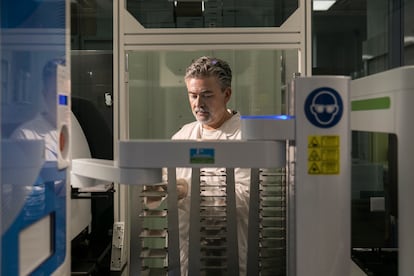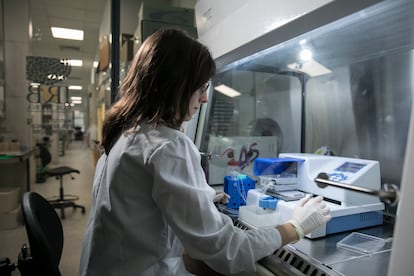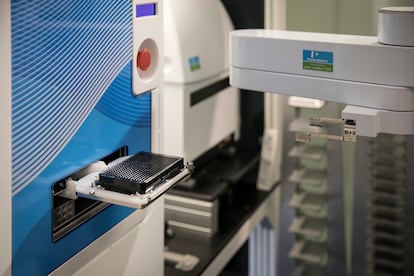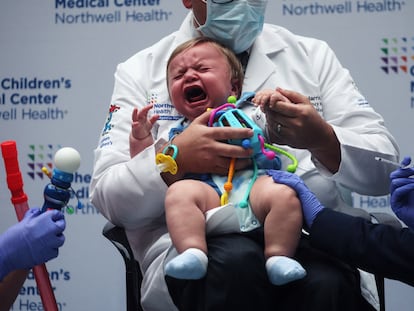Aspirin for cancer and thalidomide for leprosy: new life for old drugs
The repurposing of well-known drugs for new therapeutic indications is becoming an increasingly common approach to find new treatments for rare diseases and conditions like cancer and obesity

Call it scientific serendipity–scientists testing a drug to treat angina pectoris unexpectedly stumbled upon a remedy for erectile dysfunction. In the 1980s, pharma giant Pfizer began testing a compound called sildenafil to relax the coronary arteries and improve blood flow to the heart. But the clinical trials were not promising, and the drug failed to have the desired cardiovascular impact. Then, some patients participating in the trials reported an unexpected side effect–strong and lasting erections. So began the development of the famous little blue pill called Viagra, and a failed drug development effort turned into a spectacular success.
Viagra opened the door for the development of other erectile dysfunction drugs, and unwittingly created the drug repurposing paradigm–a new, agile approach to testing and expanding the therapeutic arsenal for combatting disease. Drug repurposing consists of finding other uses for existing drugs and molecules beyond their primary indication. Old staples of the drugstore such as aspirin and topiramate (for epilepsy) are already being studied for possible use in treating other conditions.
A typical drug or vaccine development effort takes between 10 and 15 years before regulatory approval is obtained, and it can cost up to US$2.65 billion according to New Uses for Old Drugs (Nuevos usos para viejos medicamentos, CSIC 2021), a recent book by Spanish scientists Nuria E. Campillo, María del Carmen Fernández, and María Mercedes Jiménez. They call the drug development process “an obstacle course.” It’s a race that may start with 10,000 different compounds, but after all the tests and trials to find a safe and effective therapeutic target, only one makes it to the finish line. And sometimes no one finishes the race.
The drugs on the market today all made it to the end of long and costly obstacle courses. But drug repurposing is gaining ground as an alternative development process that offers shorter timeframes and lower costs. Up to 75% of the drugs found in pharmacies today may have new therapeutic uses for 20 new clinical applications beyond the currently approved use, say Campillo and her colleagues.
In an interview with EL PAÍS, Dr. Nuria Campillo, a chemist with the Spanish National Research Council (Consejo Superior de Investigaciones Científicas - CSIC), said that since these drugs have already passed safety and toxicity tests, researchers can forego the preclinical phases. “We can save time and money, and also spare the animals used in testing,” said Campillo. Beatriz Gómez, a scientist with the Rare Diseases Networking Biomedical Research Center in Madrid (Centro de Investigación Biomédica en Red de Enfermedades Raras – CIBERER), said that the drug repurposing approach can potentially achieve “a new indication in three years.” Furthermore, the cost of launching a repurposed drug can be as low as US$318 million, a far cry from the billions it costs to develop a new drug from scratch.
There are many notable examples of repurposed drugs in pharmacy storerooms. Aspirin, for instance, is an analgesic and antipyretic that is now being used as an antiplatelet agent to improve blood flow, and is also being studied for potentially beneficial effects in colon cancer treatments. A forthcoming study to be published in JAMA Oncology associates the use of aspirin with an 18% reduction in the risk of colorectal cancer. While not everyone agrees that aspirin has cancer prevention benefits, more studies are being conducted, as well as research to test its effects on a subset of lung tumors.
Another drug that is finding new life and a measure of redemption is thalidomide, which was administered in the 1960s to curb nausea in pregnant women. It was later found to be the cause of severe congenital deformities in thousands of newborns around the world. However, after it was determined that thalidomide is effective at treating a certain type of leprosy, the drug’s reputation began to slowly recover. In 1998, it was approved in the United States for this new indication, and in 2012 it was approved to treat multiple myeloma.
The experts consulted for this article say that drug repurposing has been around “forever,” citing several examples. Cycloserine, which was used for urinary tract infections, is now a second-line drug for multidrug-resistant tuberculosis. Mifepristone, used in performing medical abortions, is being studied as a treatment for psychotic depression. And raloxifene, which was used for osteoporosis, has a new purpose in battling breast cancer.
But sometimes these repurposing efforts fail. The antiepileptic drug topiramate, while successfully used for obesity, was not effective at treating inflammatory bowel disease. The antibiotic ceftriaxone failed to work against amyotrophic lateral sclerosis, and the antihistamine latrepirdine was not effective for Huntington’s disease.
Rare diseases
The scientific community is not resting on its laurels, especially because repurposing is the best approach for finding treatments for rare diseases. “Little funding is allocated [to rare diseases] because of the small number of patients,” said Campillo. In fact, CIBERER has designated 15 drugs as “orphans,” which show promise for serious orphan (rare) diseases. Development of these orphan drugs could be financially appealing to pharmaceutical companies, and half of them have been repurposed, said Gómez. “Sometimes investment in these orphan drugs isn’t appealing because there are so few patients. Even though there are [government] incentives for development, they are still unappealing. Drug repurposing cuts the timeframe and lowers the cost of the whole process.”
Aurora Pujol is a researcher at the Bellvitge Institute for Biomedical Research (Investigación Biomédica de Bellvitge - IDIBELL) in Barcelona and specializes in a rare disease called adrenoleukodystrophy. “We have repurposed several different drugs used to treat diabetes, cancer, and multiple sclerosis. The preclinical phase of the drug development process can be skipped, but you still have to determine whether the drug works in your disease model.” She is now recruiting patients with adrenoleukodystrophy to participate in a clinical trial of dimethyl fumarate, a multiple sclerosis (MS) treatment. “This drug triggers a signaling mechanism in the brain that controls the body’s response to oxidative stress, which is different in patients with multiple sclerosis. Patients with adrenoleukodystrophy have a similar altered response as the MS patients.”
Another fertile field for drug repurposing are emerging diseases such as the vividly fresh example of COVID-19. There were hundreds of attempts during the pandemic to repurpose drugs for COVID-19. Some were relatively successful, while others were resounding failures, said César Hernández, head of the department of Medicines for Human Use at the Spanish Agency of Medicines and Medical Products (Agencia Española de Medicamentos y Productos Sanitarios - AEMPS). “The pandemic didn’t invent drug repurposing, but it allowed us to prove that you should use what you already have until a cure is discovered. The pandemic was a sort of in vitro test of successful and unsuccessful drug repurposing efforts.” For example, remdesivir, which was developed to treat the Ebola virus, demonstrated limited efficacy against the coronavirus and is not recommended. Hydroxychloroquine, an antimalarial drug, also proved ineffective against COVID-19. But dexamethasone, a corticosteroid, did demonstrate some effectiveness in treating severe cases of the disease.
Drug repurposing has accelerated thanks to the explosion of big data and the development of new technologies, says Óscar Fernández Capetillo, head of the Genomic Instability group at Spain’s National Cancer Research Center: “We used to just look at drugs approved for medical use, but now we also test drugs that have gone through clinical trials and failed. We know they are good drugs and have no bad effects, so now they can be tested in other diseases. Also, advanced data analytics enable us to predict which drugs will work.”

Artificial intelligence methods and tools act as a bridge to using old drugs for precision medicine. “We have arsenals of drugs, pathologies, and genetics. Using these three legs, we can develop personalized medicines with the chemical library we have developed,” said Campillo.
In the IRB’s laboratory in Barcelona, a robotic arm moves mechanically inside a huge glass box. Controlled by IRB senior scientist María Caballero, the arm picks up a glass block with 384 tiny reservoirs and takes it to another device for analysis. Inside these tiny test tubes in the glass block are cancer tumor cells treated with different molecules that have therapeutic potential. The treated cancer cells will be tested to analyze the effects of each molecule. The machine can test up to 15,000 compounds per day, says Israel Ramos, coordinator of the IRB’s drug discovery platform.
“The IRB’s chemical library currently contains 50,000 compounds and 2,400 drugs approved by the US Food and Drug Administration (FDA). With this platform we can very quickly find molecules that are modulating a certain pathology,” said Ramos. This search for a therapeutic target is the first step in the drug discovery obstacle course, but this technology enables everything to move at a much faster pace. Using this platform, the IRB has already performed more than half a million miniature assays to repurpose or discover new drugs.
Pharma industry disinterest
Drug repurposing is faster and cheaper, but it also has weaknesses. The price of a repurposed drug may increase dramatically because the target market is so small (few patients with the disease). Conversely, its price can drop dramatically if its patent has expired. Both situations are unappealing to big pharmaceutical companies. Moreover, the repurposed drug “may not be a perfect fit for you,” said Mabel Loza, a pharmacology professor at the University of Santiago de Compostela (Spain) and scientific director of a drug discovery platform. “The drug’s efficacy or selectivity may not be good enough or may not fit the desired profile,” she said.
Sometimes, a pharma company interested in launching and marketing a tested and approved repurposed drug cannot be found. This happened to Loza with a vitamin derivative that she was able to repurpose for treating stroke patients–she couldn’t anyone interested in marketing the product. “Businesses don’t want to sell some of these products because they’re not profitable. There should some sort of a social contract that provides repurposed drugs through their special, financially viable sales channels. Just like the generic drug industry, we need a channel for commercializing repurposed drugs,” she said.
César Hernández from AEMPS is participating in a European pilot project to determine whether repurposed drug development (using existing regulatory instruments) can be feasibly conducted by non-profit entities such as academic institutions. “There are a wide range of drugs to be explored [for repurposing],” he says, although the companies that own these drugs will ultimately decide what they want to pursue. “This is something that needs to be explored, and there may be more than one path to take. It’s logical to think that repurposed older drugs would be well-accepted because it [the new indication] increases the size of the target market. But if this causes the price to drop, the pharmaceutical companies may not be willing to include new indications.”

Emili Esteve, director of the technical department at Farmaindustria (the Spanish pharmaceutical industry trade association), laments the “lack of a legal framework that would enable a company to undertake drug repurposing.” He said, “If your product has a set price controlled by regulators, then the existing product and the repurposed drug are forced to sell at the same price. Who is going to develop a drug if you’re forced to sell it at a generic price?” Esteve wants certain “drugs of interest to the National Health System to be identified and separated from controlled pricing, so they are treated as incremental innovations. That would encourage more companies to repurpose. It doesn’t have any appeal right now,” he acknowledged.
Everyone interviewed for this article agreed that drug repurposing has been gaining traction in recent years, and undoubtedly has a role in filling “urgent and unmet needs.” Loza thinks that it can even help the system’s sustainability. “The new therapeutic arsenal is becoming so expensive that repurposed drugs offer a good way to sustain the system.”
Tu suscripción se está usando en otro dispositivo
¿Quieres añadir otro usuario a tu suscripción?
Si continúas leyendo en este dispositivo, no se podrá leer en el otro.
FlechaTu suscripción se está usando en otro dispositivo y solo puedes acceder a EL PAÍS desde un dispositivo a la vez.
Si quieres compartir tu cuenta, cambia tu suscripción a la modalidad Premium, así podrás añadir otro usuario. Cada uno accederá con su propia cuenta de email, lo que os permitirá personalizar vuestra experiencia en EL PAÍS.
¿Tienes una suscripción de empresa? Accede aquí para contratar más cuentas.
En el caso de no saber quién está usando tu cuenta, te recomendamos cambiar tu contraseña aquí.
Si decides continuar compartiendo tu cuenta, este mensaje se mostrará en tu dispositivo y en el de la otra persona que está usando tu cuenta de forma indefinida, afectando a tu experiencia de lectura. Puedes consultar aquí los términos y condiciones de la suscripción digital.
More information
Últimas noticias
Most viewed
- Oona Chaplin: ‘I told James Cameron that I was living in a treehouse and starting a permaculture project with a friend’
- Reinhard Genzel, Nobel laureate in physics: ‘One-minute videos will never give you the truth’
- Sinaloa Cartel war is taking its toll on Los Chapitos
- Why the price of coffee has skyrocketed: from Brazilian plantations to specialty coffee houses
- Silver prices are going crazy: This is what’s fueling the rally











































